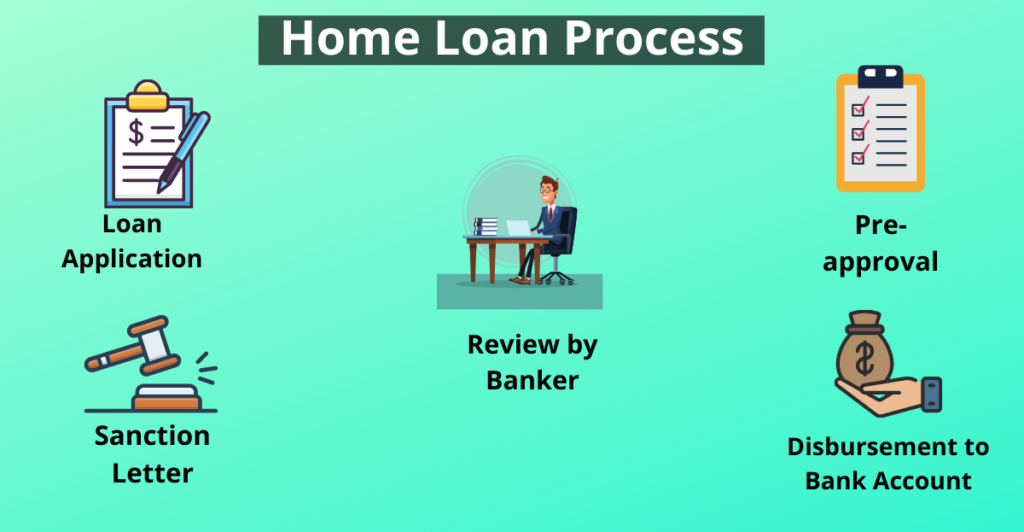
Owning a home is a significant milestone, symbolizing stability, security, and the fulfillment of a lifelong dream for many. However, for most people, buying a home involves securing a mortgage, a process that can often feel daunting and complex. At DreamHome Loans, we believe that homeownership should be within reach for everyone. That’s why we’re committed to helping you navigate the mortgage process with confidence and clarity, unlocking your path to homeownership.
Understanding Home Loans
Before we delve into the intricacies of home loans, let’s start with the basics. A home loan, also known as a mortgage, is a loan provided by a lender to help you purchase a home. The loan is secured by the property itself, which means that if you fail to make your mortgage payments, the lender has the right to foreclose on the property.
There are several types of home loans available, each with its own set of terms and conditions. The most common types of home loans include:
- Fixed-Rate Mortgages: With a fixed-rate mortgage, the interest rate remains the same for the entire term of the loan, providing stability and predictability in your monthly payments.
- Adjustable-Rate Mortgages (ARMs): An adjustable-rate mortgage has an interest rate that can change periodically, typically after an initial fixed-rate period. This can result in fluctuating monthly payments, making it important to understand the terms of the loan before committing.
- FHA Loans: Insured by the Federal Housing Administration, FHA loans are designed to help first-time homebuyers and those with less-than-perfect credit qualify for a mortgage. They often require lower down payments and have more flexible qualification criteria than conventional loans.
- VA Loans: Reserved for eligible veterans, active-duty service members, and their spouses, VA loans are guaranteed by the Department of Veterans Affairs and typically offer competitive interest rates and no down payment requirement.
- USDA Loans: Backed by the U.S. Department of Agriculture, USDA loans are designed to help low- to moderate-income borrowers in rural areas achieve homeownership. They often offer low or no down payment options and reduced mortgage insurance costs.
Understanding the different types of home loans available can help you make an informed decision about which loan option is right for you.
Preparing for the Home Loan Process
Before you start shopping for a home, it’s essential to prepare yourself financially for the home loan process. Here are some steps to consider:
- Check Your Credit Report: Your credit score plays a significant role in determining your eligibility for a mortgage and the interest rate you’ll qualify for. Review your credit report and address any errors or discrepancies that may negatively impact your credit score.
- Save for a Down Payment: While there are loan options available that require little to no down payment, having a larger down payment can lower your monthly mortgage payments and potentially qualify you for better loan terms.
- Get Pre-Approved: Getting pre-approved for a mortgage can give you a clear understanding of how much you can afford to borrow and strengthen your position as a serious buyer when making an offer on a home.
- Gather Financial Documentation: Lenders will require various financial documents to assess your eligibility for a mortgage. Gather documents such as pay stubs, W-2 forms, tax returns, and bank statements to provide to your lender.
By taking these proactive steps to prepare yourself financially, you’ll be better positioned to navigate the home loan process and secure the financing you need to purchase your dream home.
Navigating the Home Loan Process
Once you’ve prepared yourself financially, it’s time to navigate the home loan process. Here’s what to expect:
- Submit Your Mortgage Application: Start by submitting a mortgage application to your chosen lender. The application will require detailed information about your financial situation, employment history, and the property you’re looking to purchase.
- Undergo a Mortgage Underwriting Process: After you’ve submitted your application, the lender will conduct a thorough review of your financial documents and credit history to assess your eligibility for the loan. This process is known as mortgage underwriting.
- Appraisal and Home Inspection: As part of the mortgage process, the lender will typically require an appraisal and home inspection to assess the value and condition of the property you’re purchasing. These assessments help ensure that the property meets the lender’s standards and that you’re not overpaying for the home.
- Receive Mortgage Approval: If the lender approves your mortgage application, you’ll receive a loan commitment letter outlining the terms and conditions of the loan. Review the letter carefully to ensure that you understand all the terms before proceeding.
- Close on Your Mortgage: The final step in the home loan process is closing on your loan. During the closing process, you’ll sign all the necessary paperwork to finalize the purchase of your home, including the mortgage note, deed of trust, and various disclosures.
Conclusion: Your Path to Homeownership
Congratulations! You’ve successfully navigated the home loan process and secured the financing you need to purchase your dream home. At DreamHome Loans, we’re honored to have been part of your journey to homeownership. Whether you’re a first-time buyer or a seasoned homeowner, we’re here to help you unlock the door to your new home and start building a lifetime of memories. Welcome home!

